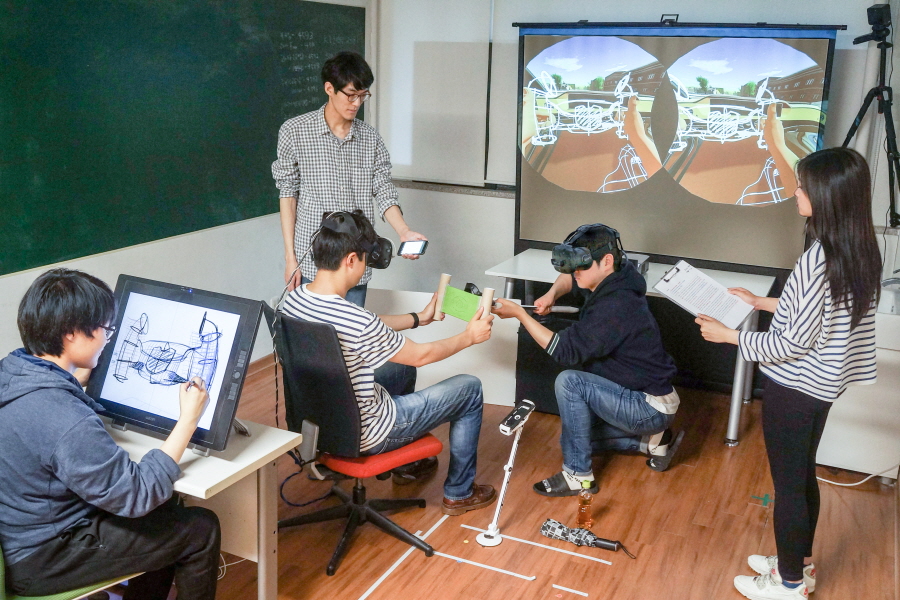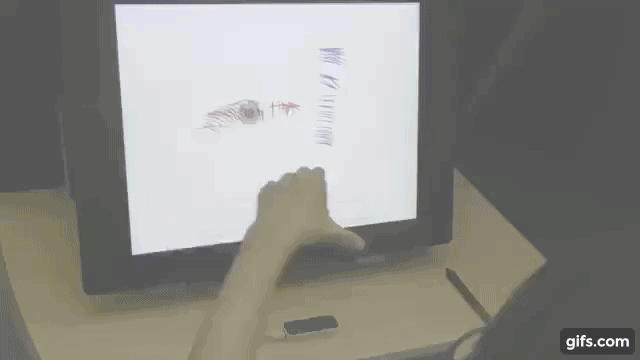Researchers from the Korean Advanced Institute of Science and Technology (KAIST) have developed a new 3D sketching platform that merges hand motions with digital pen drawing to generate faster and more accurate product designs.
The Agile 3D sketching system, as it is called, also enables more design freedom as a result of its combined sketching mediums. Yongkwan Kim, Ph.D. student at the KAIST Department of Industrial Design stated:
“I believe the system will enhance product quality and work efficiency because designers can express their 3D ideas quickly yet accurately without using complex 3D CAD modeling software.”
Grappling with Virtual Reality
The birth of a new product starts with idea generation. Commonly, designers begin conceptualizing their ideas through hand-drawn sketches. However, further along the product development phase, designs must transform their sketches into 3D models.
At this stage here are digital limitations when designing a product using CAD, as users must be competent in the complexities and caveats of the software. Thus, KAIST researchers have utilized Virtual Reality (VR) to create “air scaffolding” capabilites which bridges the gap between 2D sketching and 3D modeling.
“There have been many attempts to encourage creative activities in various fields by using advanced computer technology,” said Seok-Hyung Bae, Associate Professor of Industrial Design at KAIST.
“Based on in-depth understanding of designers, we take the lead in innovating the design process by applying cutting-edge technology.”

Design at your fingertips
Delving into advanced 3D design tools, Professor Bae and the KAIST research team began developing a 3D curve sketching system for professional designers entitled ILoveSketch. Following this, the team implemented hand-tracking sensors to expand the system into a handheld product utilizing first-person hand postures.
This birthed the Agile 3D sketching algorithm which uses the designer’s hand motions to construct rough 3D shapes. The designer can then elaborate on the 3D shapes using a stylus or pen drawing.

After several user tests, the team identified that this technique is rather user-friendly, thus, reducing product design time. The test also indicated an increased level of accuracy in defining the proportion and scale of products.
Similarly, Jwall, creator of the 3D printing Youtube Channel, Print That Thing, used a VR in the Gravity Sketch creation tool to create a 3D printed bowl for his cat Bobo.
VR is also valued as a future design tool by leading global software company Dassault Systèmes, making its 3DEXPERIENCE CAD model viewer compatible with HTC Vive.
KAIST’s Agile 3D Sketching research was chosen as one of the Conference on Human Factors in Computing Systems (CHI) 2018 Best Papers by the Association for Computing Machinery.
Want to know more about 3D modeling and additive manufacturing? Subscribe to the 3D Printing Industry newsletter. Also, follow us on Twitter, and like us on Facebook.
Looking for new talent or seeking a career change? Search and post 3D Printing Jobs for opportunities and new talent across engineering, marketing, sales and more.
Featured image shows inside the KAIST Sketch Lab. Photo via KAIST.


